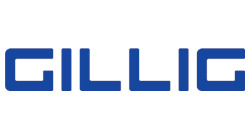AAATA Board of Directors Decides on Propulsion Technology for New Bus Order
At its Nov. 20 meeting, the AAATA Board of Directors voted unanimously on the propulsion technology that will be used in an order of 27 new buses to be ordered in 2015. The delivery, which will include 24 low-emission conventional buses and three hybrid-electric buses, will be the first in a series that the AAATA will make over the next five years. The buses be used for new and expanded services as well as to replace older buses in the agency’s fleet. Up to 60 new buses will be purchased from Gillig LLC over the next five years.
AAATA previously received grants to cover the incremental cost between conventional and hybrid buses, however, that funding is no longer available. The upfront cost of a low-emission conventional bus is about $455,298, while the upfront cost of an electric hybrid bus is about $650,763. It would cost approximately $12.3 million to purchase 27 conventional buses, and $17.6 million to purchase all hybrid buses.
Charles Griffith, AAATA’s Board chair, said “This is a tough decision but we’re glad we were able to make some near-term commitments toward maintaining TheRide’s excellent fleet of hybrid buses, as well as continue to explore new technologies and approaches to ensure TheRide’s environmental leadership. TheRide will continue to explore the best bus technologies available to meet customer needs and contribute towards a cleaner environment. Our hope is that the next bus purchase might include even better technology options for reducing emissions.”
AAATA is a leader in the public transportation industry and continuously explores ways to become more environmentally friendly. The agency’s first hybrid-electric bus was put into service in 2007, and its fleet currently boasts the highest percentage of hybrid buses in the nation. AAATA’s staff and Board of Directors have extensively researched both the financial and environmental pros and cons of operating and maintaining hybrid and conventional buses. Recent improvements in technology and tightened federal standards have made conventional diesel buses much more fuel-efficient and environmentally-friendly, which made this a more difficult decision. “The ultimate goal of introducing hybrid-electric buses was to have a greener fleet in order to reduce our carbon footprint in the environment and reduce our dependency on foreign oil. It was also an effort to support former Ann Arbor Mayor Hieftje’s Clean Cities Initiative,” Griffith said.
Chris White, AAATA’s manager of service development, noted “The emissions and noise from conventional diesel buses have been greatly reduced. The advantage of hybrid-electric buses is now not as great, compared to 2007 when AAATA put its first hybrid buses into service.” New low-emission conventional buses will reduce emissions by 90 percent when compared to the oldest conventional buses in the fleet. Additionally, the fuel efficiency of the hybrid-electric buses is 25 percent greater than the newer conventional buses.
The oldest hybrids among the 52 in AAATA’s fleet are about seven years old and are not scheduled for replacement until at least 2019. “AAATA currently uses ultra-low sulfur biodiesel in 100 percent of its buses, and is researching emerging technologies like compressed natural gas (CNG), full electric, and newer hybrid technology for future bus purchases in 2017, 2018, and 2019. A reliable fleet is paramount in meeting the needs of our customers, and a key component to a cleaner environment is offering efficient public transportation service. Bus propulsion technology is a fast changing area and AAATA can benefit from understanding the dynamics of the changing vehicle technology marketplace to support future purchase decisions,” added White.




